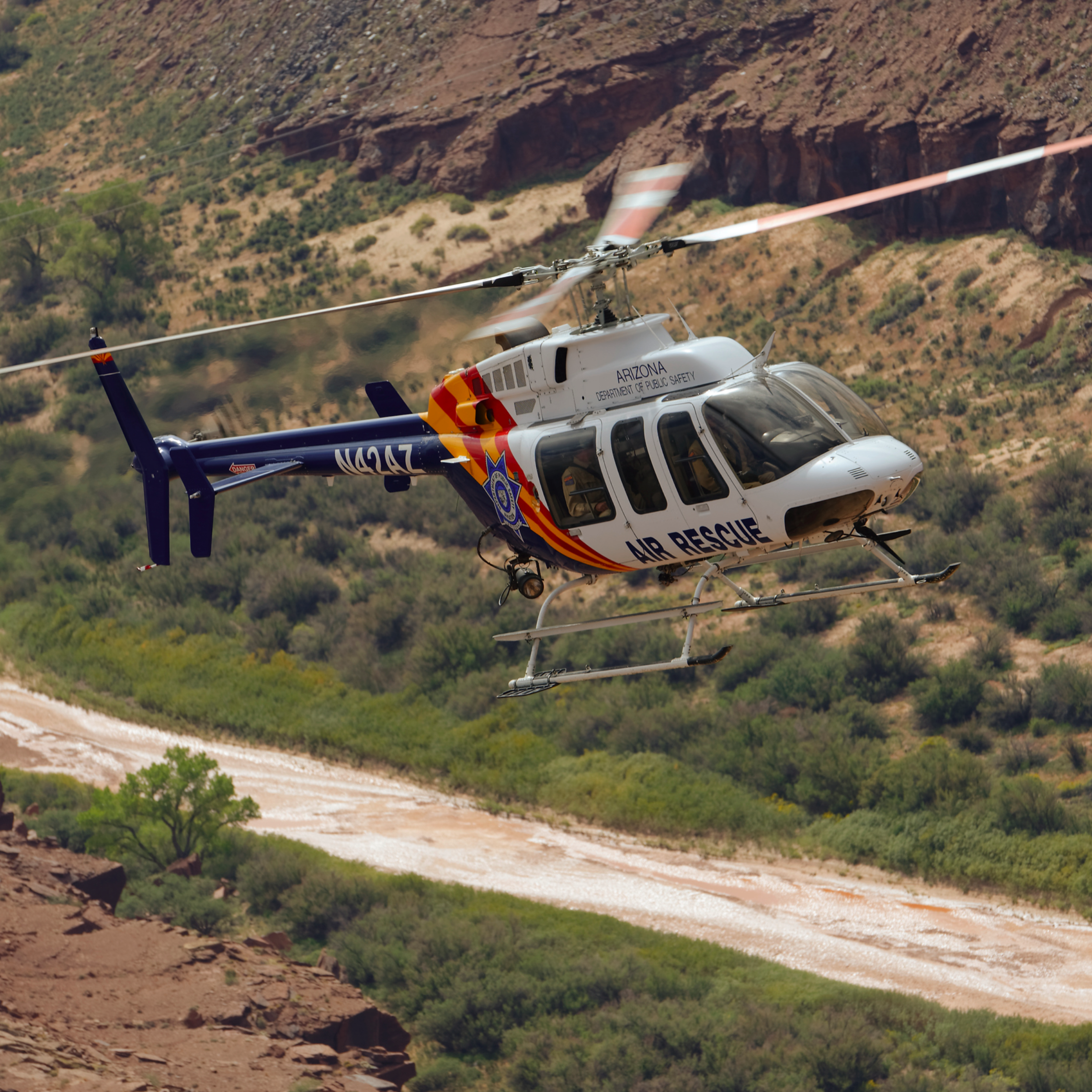
Main navigation

Aviation Services
The Aviation Bureau provides critical operational and air rescue support to the citizens of Arizona, as well as the Department and local, state, and federal partners. With a fleet of three Bell 429 and two Bell 407 helicopters and two King Air fixed-wing aircraft, the bureau operates from four air bases across the state and Sky Harbor International Airport in Phoenix. Rotary-wing bases are located in Kingman, Flagstaff, Phoenix-Deer Valley, and Tucson. Fixed-wing operations and all aircraft maintenance are performed out of Phoenix Sky Harbor. The Aviation Bureau is led by a commander, a chief rotary-wing pilot, a chief fixed-wing pilot, four air base supervisors, two aircraft technician supervisors, and a chief paramedic.
Fiscal year 2023 highlights include the purchase of two new Bell 429 helicopters, the implementation of a civilian paramedic classification, and the installation of an above-ground fuel tank in Tucson to maximize safety and operational availability. Arizona DPS aircraft flew over 2,000 missions during fiscal year 2023, logging nearly 2,800 hours of flight time. These included 543 law enforcement and 429 rescue flights.
Since the implementation of the Bell 429 twin-engine helicopter in 2016, the rescue capability of the Arizona Department of Public Safety’s Aviation Bureau has increased significantly. The Bell 429 facilitates more expeditious technical rescues due to its on-board hoist system, and it provides a night technical rescue capability that does not exist with the Bell 407. While external hoist systems and autopilots are installed on the Bell 429 only, all DPS helicopters are equipped with an MX-10 color camera/forward-looking infrared radar and a terrain avoidance and warning system. Bell 407 aircraft will be retrofitted with autopilot systems in the coming months
Moving into fiscal year 2024, the Aviation Bureau will continue refining its training, procedures, and processes to ensure it maintains the highest possible level of safety and operational excellence. It will continue to address staffing challenges with the introduction of innovative and collaborative solutions, and the operational and management priority will continue to be “zero aviation incidents.”